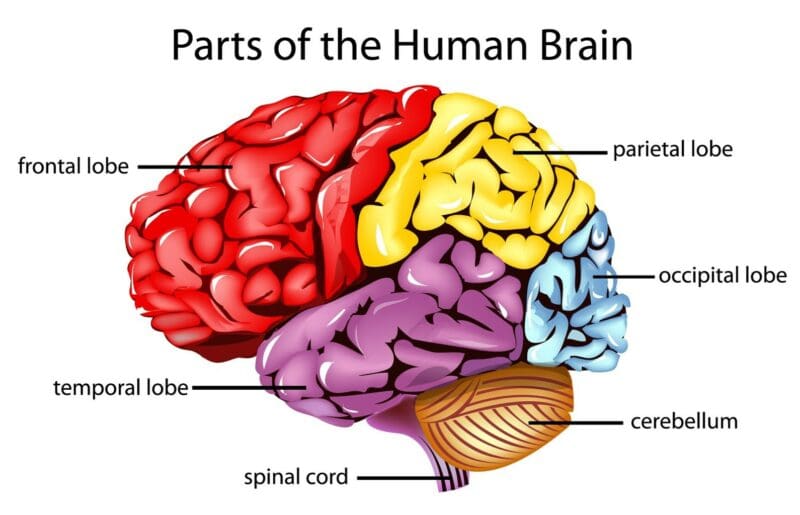In this post
When it is fully developed, the human brain weighs about 1.5kg and contains approximately 100 billion nerve cells. It is the most complex structure in the world, and even now researchers do not know how much of it works!
The brain is divided into two halves, known as ‘hemispheres’; they look very similar and are joined together by a connecting bundle of nerve cells known as the corpus callosum. The brain is surrounded by a layer of tissue, which gives a grey colour and it is protected from injury by the skull, which is the bony structure that surrounds it.
The brain begins to develop before a person is born and continues to develop throughout their lifespan. It is responsible for everything that a person does from breathing to remembering and it is separated into several specialised areas, all of which work together, passing ‘messages’ between each other and the rest of the body.

Early development of the forebrain, midbrain and hindbrain
As early as the third or fourth week of development, when the embryo is less than the size of a poppy seed, the brain is already beginning to take shape. A long tube appears, which develops into three separate hollows, which are, from top down, the forebrain, midbrain and hindbrain.
The spinal cord begins to develop underneath the hindbrain. By the fifth week of development, the embryo will divide further as the forebrain and the hindbrain will also have split into two separate hollows, meaning that there are five altogether.
The forebrain splits so that it has an anterior (front) section and a posterior (back) section. The hindbrain divides straight down its middle, whilst the midbrain does not split at all.
Early development of the cerebellum and medulla
The cerebellum begins to develop when the embryo is around six weeks, and by the time a year has passed it will be three times larger (remember that the embryo does not become a foetus until nine weeks of gestation).
In Latin, cerebellum means ‘little brain’. It is located in the hindbrain at the base of the skull and is responsible for the following functions:
- Coordination
- Balance
- Muscle tone
- Body positioning, particularly the ability to stand upright
It relays information between muscles and the area of the brain that is responsible for that particular area of movement.
The medulla (also known as the medulla oblongata) is located in the hindbrain, in the lower part of the brain stem. It is responsible for regulating autonomic functions such as breathing, sneezing, swallowing, blood pressure and heart rate. It is also important in relaying messages between the spinal cord and the higher areas of the brain. By 20 weeks’ gestation, the medulla has connected the rest of the brain to the spinal cord.




